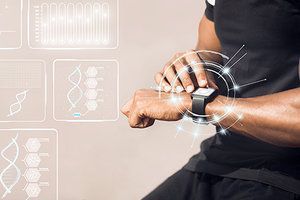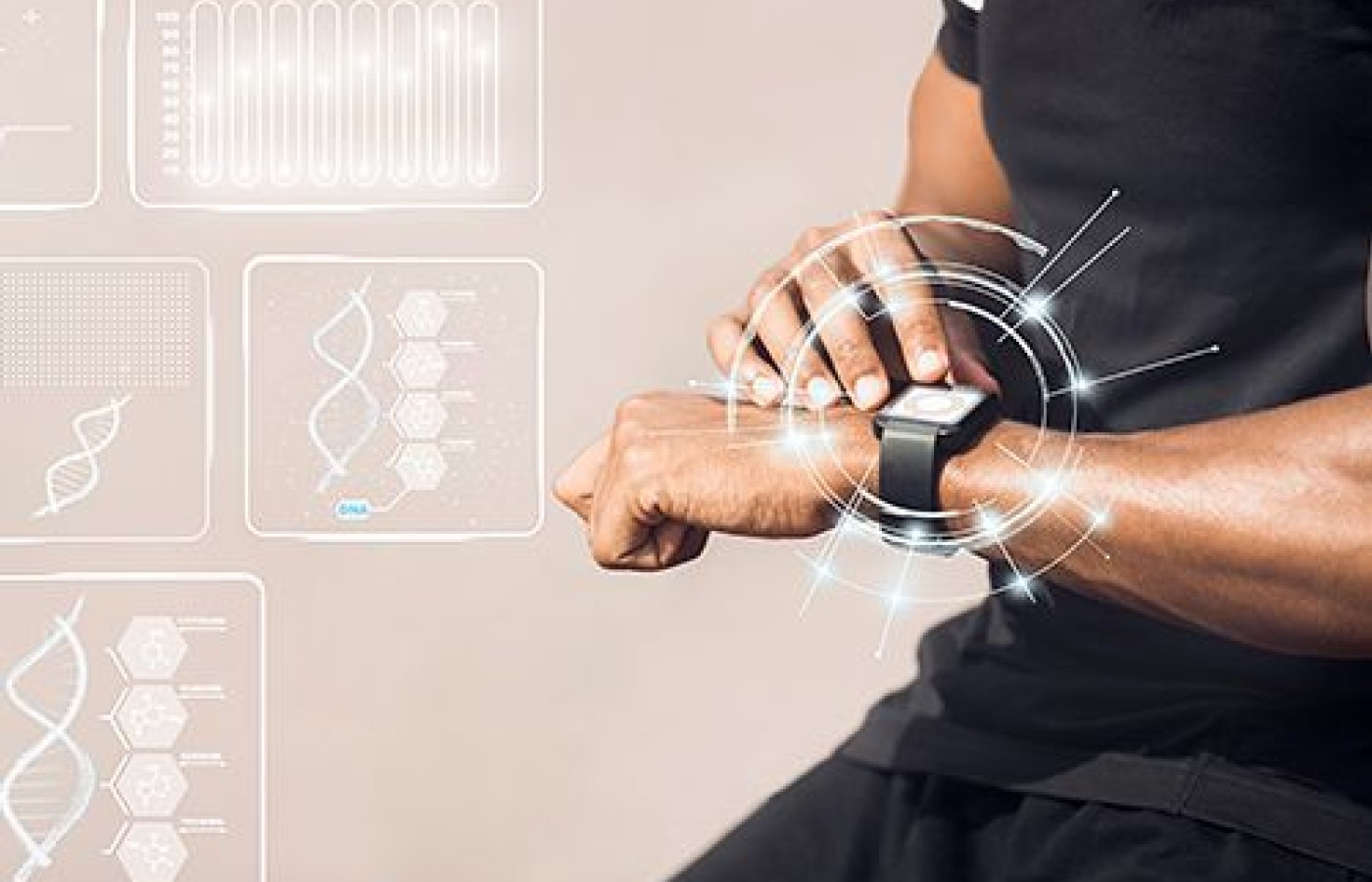It is estimated that 61% of patients with CTS avoid taking surgical options due to postoperative complications and costly surgical procedures. Chiropractic care offers a comprehensive and effective treatment for carpal tunnel syndrome, addressing the condition from multiple angles. Recent studies also have unveiled a game-changing adjunct to chiropractic treatments for CTS: nerve flossing.
Wake Up Your Patients to Wellness
This is the second in a series of 2021 articles dedicated to examining how patients' increasing fascination with health monitoring via technology – specifically the smartwatch – can not only provide you, their doctor of chiropractic, with valuable information regarding their health status, but also take the DC-patient relationship to an entirely new level. While the wearable technology marketplace features numerous brands, we'll use the latest Apple Watch (Series 6) as our example. Keep in mind that some of the tracking features discussed in this and subsequent articles are also included in previous Apple Watch iterations.
If you're not having a serious conversation with every patient about their sleep habits, you're missing out on two significant opportunities to help them better understand the need for your care.
First and most obvious, poor sleep habits can cause pain, particularly back and neck pain, whether from tossing and turning all night or just spending too much time upright (i.e., awake and staring at a phone or laptop). Second, getting patients to appreciate that true health is a lifestyle, not a collection of reactionary moments requiring pharmaceutical intervention, arms them to embrace lifelong chiropractic wellness care.

Fortunately, technology – in the form of the smartwatch – is helping drive these conversations. As is the case with every article in this series, we'll use the latest Apple Watch (6) as our example.
Putting Sleep in the Spotlight
The Apple Watch lets your patients track sleep in several key ways. From the Health app on the patient's iPhone, they can "Set Up Sleep" to establish nightly sleep goals (4-12 hours) and specific bedtime and wake-up times; and enable "Sleep Mode," which limits potential distractions before bedtime and while sleeping.
For example, if the patient sets their sleep schedule for eight hours, from 10:00 p.m. (bedtime) to 6:00 a.m. (wake time), with a wind-down time 30 minutes prior to bedtime, they'll get a gentle reminder (the first few notes of "Go to Sleep Little Baby") at 9:30 p.m. At the same time, the watch will enter "Do Not Disturb" mode, which dims the watch face and prevents notifications (texts, emails and everything else that normally makes one's watch hum and light up all day), except those the patient has chosen to keep active for emergency purposes, such as family phone numbers, etc.
Your patient can also enable "Wind Down Shortcuts," which allows them set up shortcuts to help prepare for quality sleep. Journal thoughts in Notes, listen to a relaxing music playlist or favorite podcast, read an e-book, access a favorite meditation app – these and other sleep-promoting activities are at the patient's fingertips.
Tracking Sleep: An Eye Opener
The Apple Watch also lets your patient know whenever they've reached their daily sleep goal; and allows them to set different sleep schedules per day. (Although research suggests maintaining the same schedule every day is ideal, we all know that doesn't always work out.)
Having this capability makes it more likely your patient will program in a few extra hours of sleep one night to account for fewer hours on another night. "More likely" doesn't always mean "will happen," but at least it gets your patient thinking about their sleep patterns and habits.
All sleep data is synced with the Health app on the user's iPhone, so your patient can review previous days for comparison (weekly and monthly). A graphic representation (bar graph) that shows how much / how little sleep was achieved in the past month can be a real eye opener.
You might be thinking, how does the watch know when you're sleeping? The Apple Watch provides data on length of time in bed and time asleep based primarily on movement. If the watch doesn't detect any movement between 10:00 p.m. and 6:00 a.m., or only tracks a few steps (the 3:00 a.m. bathroom trip), it's highly likely your patient has actually been sleeping (less likely: lying utterly motionless – which is almost impossible – in bed watching reruns of "Friends" all night; far less likely: deceased).
Of course, your patient might be asleep, but still moving around all night. Back to the bar graph. Each bar shows one night's worth of sleep – but it's not always a solid bar. Thin horizontal lines throughout the bar (hopefully only a few) indicate when your patient's sleep may have been restless or interrupted; or when the watch thinks you may have been awake (i.e., lying in bed); again, based on movement. This isn't perfect science, but that's not the point; it helps make sleep – particularly amount and quality – a priority in your patient's mind.
Why It Matters to Patients (and You)
I won't hit you with reams of research about the link between poor sleep and poor health, particularly chronic poor sleep and chronic poor health. As a doctor of chiropractic, you know it better than anyone: better sleep = better health, pure and simple.
For your patients, the sleep features tied into the Apple Watch make them aware of their sleep habits; engaged in getting adequate sleep every night; and more likely to think about the positive and negative health consequences associated with sleep, both in the short and long term.
For you, the significance is simple and profound: The sleep conversation makes sense. A patient who cares about their sleep and understands the connection to their health and wellness is infinitely more receptive to recommendations that promote better sleep, whether it involves swapping out their pillow, adjusting their sleep position, dietary / exercise changes or anything else.
But there's more to it than that. A good night's sleep makes your patients feel good: alert, refreshed, balanced and ready to take on the day. Patients who appreciate wellness from a sleep perspective also appreciate it from a chiropractic perspective – as in the value of lifelong chiropractic wellness care.
Editor's Note: The first article in this series focused on how several features of the Apple Watch allow wearers to monitor and improve their posture – and how you can use this information and knowledge to expand the doctor-patient relationship like never before.



